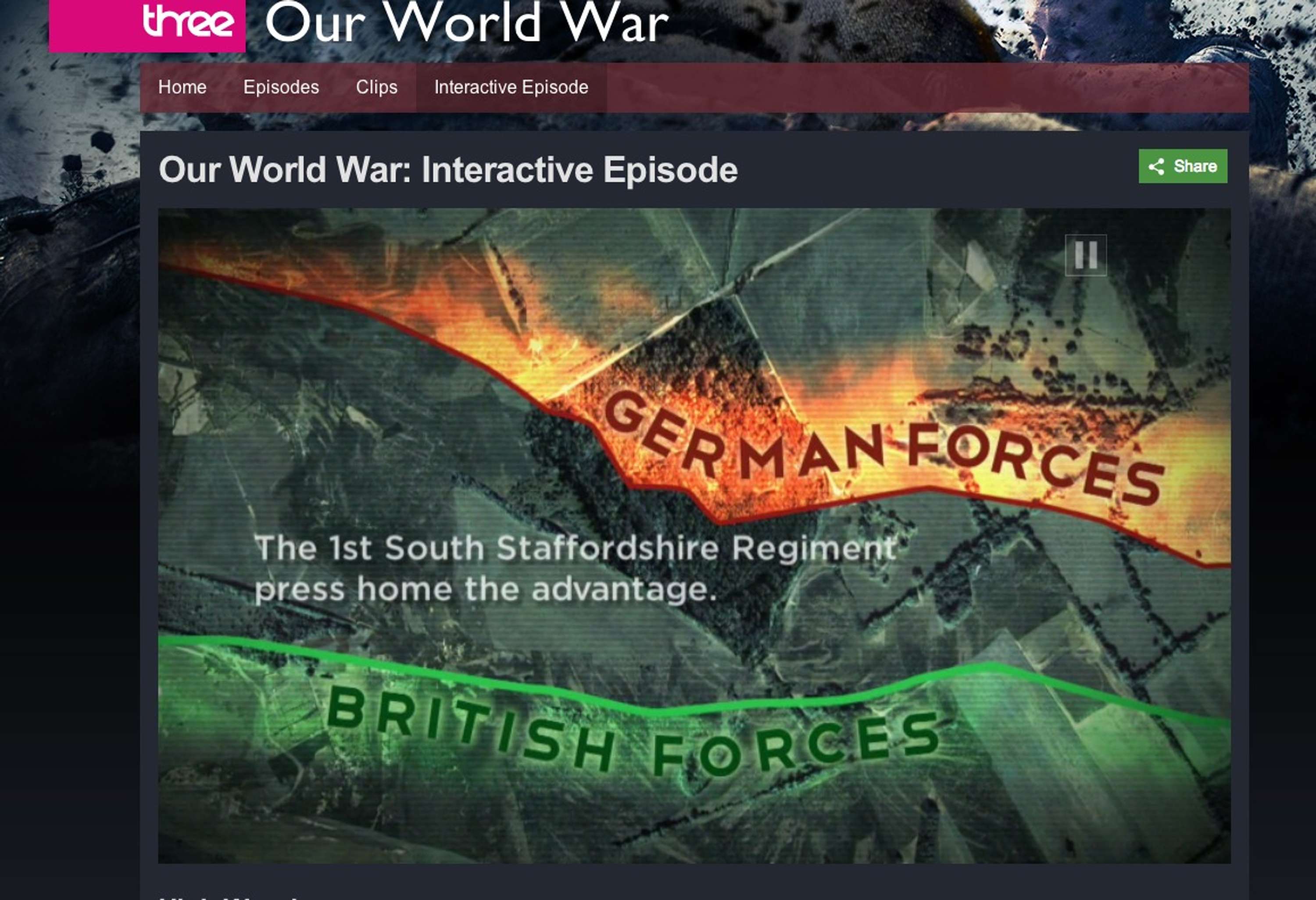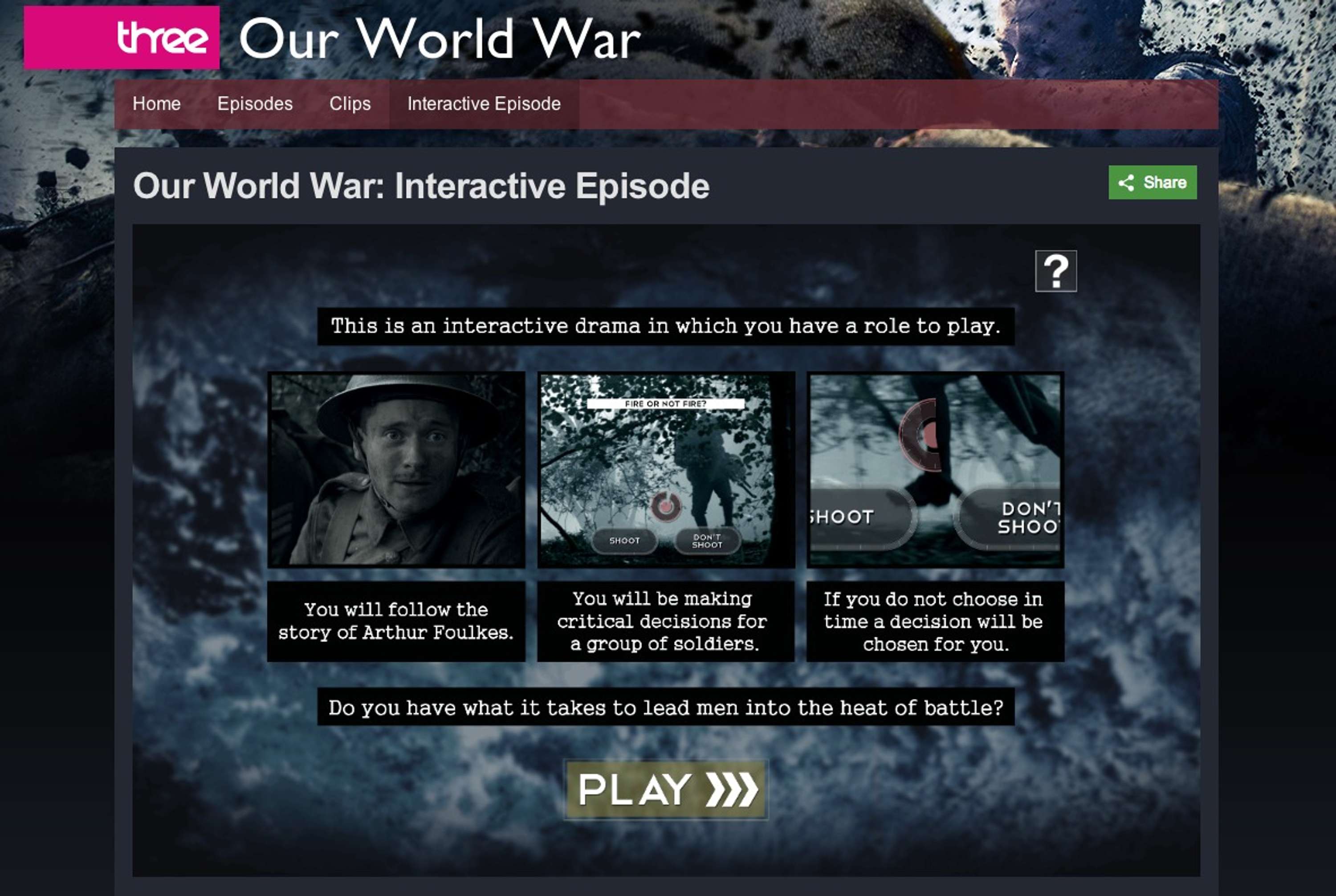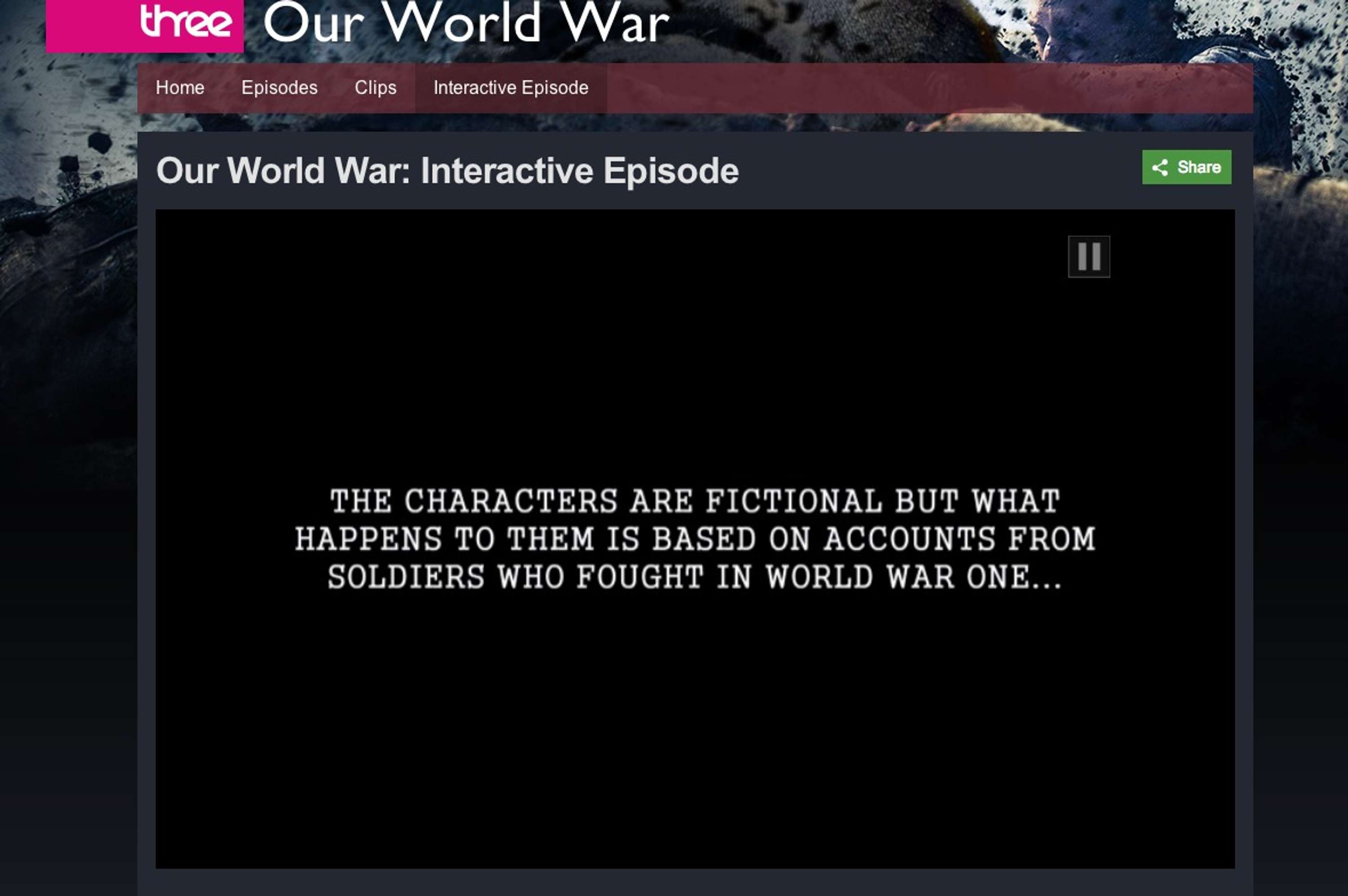The BBC iWonder team asked us to develop an interactive experience for tablet and desktop users to complement the three part TV series Our World War, running on BBC3. This interactive episode was commissioned and produced by BBC Learning, and my team and I worked with the Producers delivering the live action narrative to create an innovative, compelling and educational experience, exploring the possibilities of interactive storytelling and TV.
Very early on, we settled on a couple of outcomes that were very important to the development of the piece. Firstly we asked ourselves how you could realise the vision of “TV you can touch”. We also asked whether ethical and moral dilemmas – faced by well drawn characters in a typical drama – could be written so that participating in their story arcs could deliver a deeper reflection on the journey they take.
One big challenge was how to introduce an interactive choice mechanic that resonated with both the narrative and the editorial tone. We were inspired by work done in literature from our youth, “Choose Your Own Adventure” – and stories told in this way, but one of the biggest inspirations was “The Walking Dead” game, developed by Telltale Games. This interactive story introduced some innovative moments of reflection, choice and forced decision, making the story more involving and compelling - and this was something we immediately built into own our own aims and objectives.
The producers and academic advisors provided a number of historical records and soldier accounts of the period, identifying situations soldiers would have been placed in demanding difficult choices. With historical events, a key setting and a series of difficult choices, we developed a story interaction model that would allow us to take the participant through the decisions and to be immersed in the story.
We crafted this immersion by breaking down the story arc and choice moments into flow charts to establish how the piece might work. Based on these flows and story dissections we put together “Tempo” charts to explore how a specific speed of user interaction might map across onto the pace and tone of the story at any given moment. Is it more compelling if during a tense, pacy point in the story, the user needs to decide quicker? Is that approach more immersive? In the end we ended up with a balanced set of interaction times relevant to the narrative and the decision at hand.




